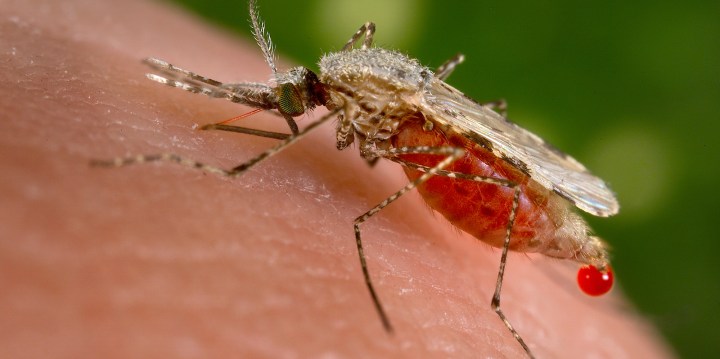KILLER INSECTS
Malaria-carrying mosquitoes move deeper into southern Africa — and the climate crisis could be to blame

Researchers have plotted the movement of Anopheles mosquito populations in sub-Saharan Africa, and found they are moving deeper into southern Africa and to higher elevations than previously recorded.
Over the last century, malaria-carrying mosquitoes have been migrating across Africa and scientists warn that climate change could be to blame.
From data that date back 120 years, researchers have been able to plot the movement of Anopheles mosquito populations in sub-Saharan Africa, and they found they are moving deeper into southern Africa and to higher elevations than previously recorded.
They estimate that these populations are gaining an average of 6.5m of elevation a year and are increasing their ranges south of the equator by 4.7km a year.
“There has been a lot of forecasting work; we know a lot more about the future than the recent past. But this is the first time that we have sat down and said, we know that these species are supposed to be moving in a world that is 1.2 degrees warmer, but how did it start?” explains Colin Carlson, an assistant research professor at the Centre for Global Health Science and Security at Georgetown University Medical Center in the US.
Carlson was the lead author on a study that appeared in the latest issue of the journal Biology Letters. He added that this movement is what science would expect to see if climate change was helping these species reach colder parts of the African continent.
Mosquitoes are now found in the highlands of east Africa, at altitudes of 2,000m.
Visit Daily Maverick’s home page for more news, analysis and investigations
The data that the researchers used began to be collected shortly after the Scottish physician Ronald Ross proved the complete life cycle of the malaria parasite in mosquitoes in 1897. Colonial epidemiologists across Africa began identifying and looking for malaria-carrying Anopheles mosquitoes.
The problem, Carlson and his colleagues found, was that there were gaps in the data, particularly from the early days.
“This data recorded that at this location, this species of mosquito was seen. What we don’t necessarily have is absence. So, we don’t have people taking down records and saying I’m at 2,500 metres elevation, no mosquitoes today,” Carlson explains.
The quality of the data improved in the 1940s and 1950s after global malaria eradication programmes were launched.
However, even with the introduction of these eradication programmes, malaria remains one of humankind’s biggest killers.
The World Health Organization estimated that in 2020 there were 241 million cases of malaria worldwide, with an estimated 627,000 deaths. Of these deaths, 95% of them occurred in sub-Saharan Africa and most were of children under the age of 5.
Professor Lizette Koekemoer, of Wits University’s Research Institute for Malaria, said this study was important in understanding the role climate change has in the movement of malaria, but warned that mosquitoes are complicated parasites.
“I think it’s important to know what to expect, so we can be prepared. So if you know that because of high temperatures places at higher altitude can now harbour mosquitoes, then your controls need to now include those places. But there are so many things that play a role in how these insects behave, where they breed and what they do,” says Koekemoer, who didn’t take part in the study.
Studies have shown that malaria-carrying mosquitoes are increasing their range because of deforestation and changes in agricultural use.
As temperatures increase, driven by climate change, parts of South Africa that historically never had malaria could see outbreaks of the disease.
“The only reason why these mosquitoes don’t breed in Johannesburg is because the winters are so cold, but if the winters change, then they will be here,” says Koekemoer, adding that until the 1930s Pretoria used to have malaria cases. This changed after controls were put in place to eradicate the disease.
The capital does still have the odd case, but these are blamed on suitcase malaria where a mosquito hitches a ride in a car or truck, comes into the city and passes on the disease to a resident.
“The bulk of our malaria is imported mainly from Mozambique, especially the northern parts of Mozambique, where the malaria cases are really, really high,” says Koekemoer.
To stop the spread of malaria, institutions like the Wits Research Institute for Malaria are investigating how humans and mosquitoes interact. They are even looking at how changes in how humans socialise at night might cause increases in malaria cases.
In the future, Carlson and his team hope to further refine their research and answer questions on how climate change is affecting not just mosquitoes but other parasites, like ticks that too could be on the march.
“We know so little about how climate change is affecting invertebrate biodiversity. Public health is giving us a rare window into how some insects might be thriving in a changing climate — even if it’s bad news for humans,” he says. DM/OBP
















 Become an Insider
Become an Insider
Comments - Please login in order to comment.